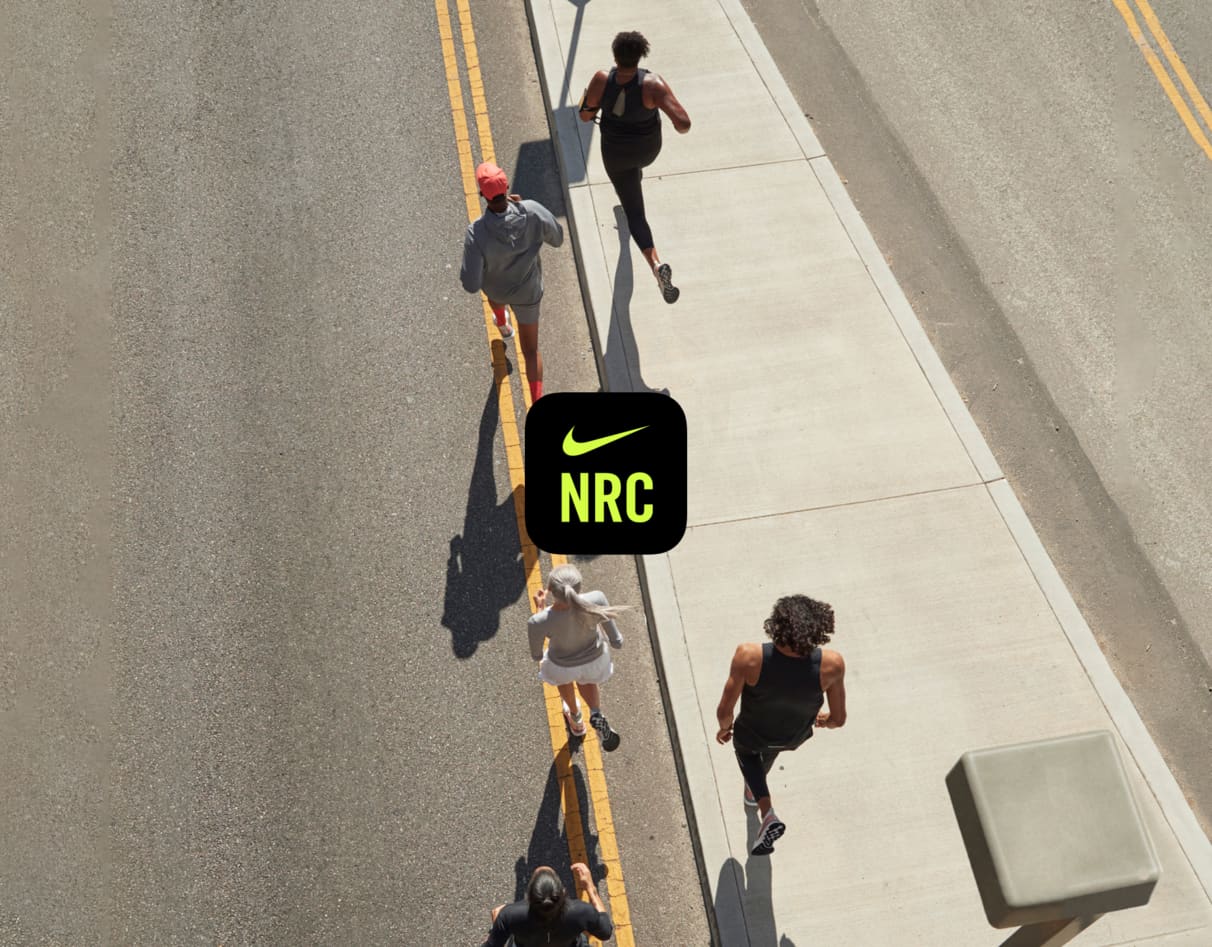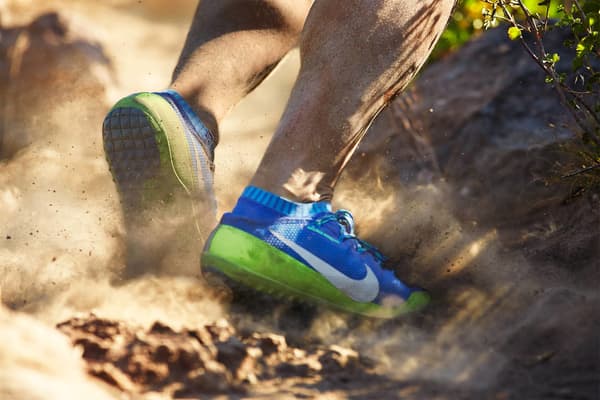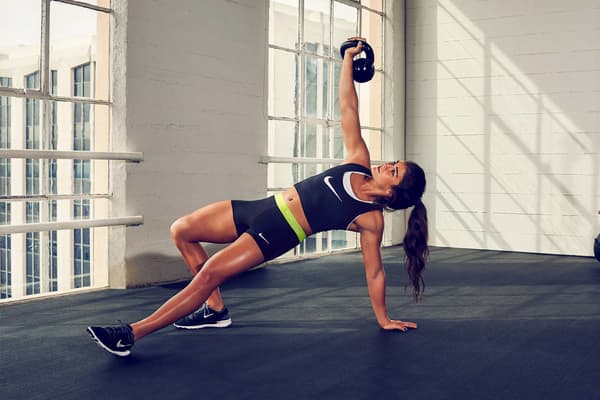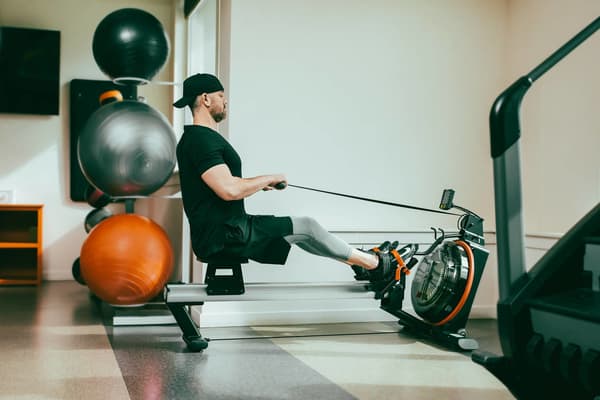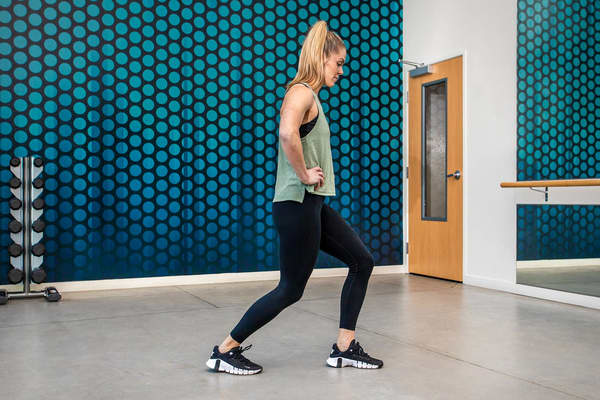How To Tell If You Have Heat Exhaustion—And What To Do About It, According To Doctors
Sport & Activity
Check out these heat exhaustion symptoms, along with how to immediately treat the issue.

You're enjoying the summer temperatures and crushing your outdoor workout and then you start to feel a little off. Slightly woozy, maybe, or a headache that comes on a little too fast. Is it dehydration or something more serious, like heat exhaustion?
Here are the signs of heat exhaustion, and doctor-approved guidance on what to do next, along with how to prevent getting to that point in the first place.
What is heat exhaustion?
Before highlighting the signs of heat exhaustion, it's helpful to know what the condition entails, and how it differs from similar problems.
There are several types of heat-related illnesses, according to the US Centers for Disease Control. These range from mild to potentially life-threatening. More mild conditions can include heat rash, which tends to result in small blisters, or cramps, which include muscle spasms. Alternatively, heat stroke is the most serious heat-related condition and can be fatal if not treated immediately.
On the severity scale, heat exhaustion resides between heat rash and heat stroke. Heat exhaustion occurs when your body overheats, according to Ali Mesiwala, MD., neurosurgeon and sports specialist at DISC Sports and Spine Center in Newport Beach, California.
"Your body must regulate the heat lost in cold weather or heat gained in hot weather in order to maintain a normal core temperature", he said. "Normally, your body sweats when exercising, and the evaporation of sweat cools the body down. In hot and humid environments, this cooling mechanism doesn't work well".
RELATED: 7 Benefits of Getting Your Run Done in the Morning
If you're dehydrated, have consumed large quantities of alcohol, or are wearing clothes that don't allow sweat to easily evaporate (More: try these sweat-wicking clothes!), the risks of developing heat exhaustion can increase, Mesiwala said. That's particularly true when you add in strenuous physical activity (think running or HIIT) during bouts of high humidity.
"When your body cannot regulate its core temperature in this situation, symptoms rapidly develop, and if untreated, disaster can strike", he said. That's at the extreme end where heat stroke lives, he said. But since heat exhaustion may be a stop along that path, it's crucial to identify it before it becomes more serious.
11+ Heat Exhaustion Symptoms To Watch Out For
That initial feeling of something being "off" is worth noticing, according to Casey Batten, MD., director of primary care sports medicine at Cedars-Sinai Kerlan-Jobe Institute in Los Angeles, and lead primary care sports medicine doctor for the Los Angeles Rams football team.
"Signs usually start with feeling like you're out of shape, including a wave of fatigue and weakness", he said. "Then if you continue to exercise, you're likely to have other symptoms of heat exhaustion layering on top of that feeling". Those include:
- Profuse sweating
- Nausea
- Dizziness
- Cold, clammy skin
- Headache
- Irritability
- Thirst
- Decreased urine output
- Higher body temperature
- Lightheadedness
- Rapid pulse
When heat exhaustion continues—and it can be rapid, going from feeling vaguely off to worsening symptoms in about 10 to 15 minutes—you may even experience the absence of sweating, said Anjali Bharati, DO., emergency medicine doctor at Lenox Health Greenwich Village in New York. That's due to your body being unable to determine proper temperature regulation, so your skin will be dry and hot instead, even if you were profusely sweating not long before.
When you reach this point in heat exhaustion, you may also experience abdominal cramps and dark urine—the colour of tea or cola—since you're probably dehydrated, Bharati said. You may also struggle to stand up, feel a head rush when you do and have a racing pulse.
If you continue to exercise despite worsening symptoms of heat exhaustion, you may develop heat stroke. When that happens, body temperature can shoot up to 41 degrees Celsius within 15 minutes, according to the CDC.
Another potential complication is development of rhabdomyolysis—sometimes called rhabdo—which is associated with heat stress and prolonged physical exertion. When this occurs, muscle tissue dies and electrolytes and proteins are released into the bloodstream, potentially causing irregular heart rhythms, kidney damage and seizures.
Best bet? Treat heat exhaustion as soon as you detect early symptoms—even if you're unsure. When you're exercising in hot and humid conditions, caution is always the best bet.
How to Treat Heat Exhaustion
If you're starting to experience any of the symptoms of heat exhaustion, the first step is to stop all activity straight away, advised Mesiwala. Here's what to do next:
- Get to a cool, shaded location; ideally, in air-conditioning.
- Drink cold water or a beverage with electrolytes in frequent sips instead of chugging.
- Remove unnecessary clothing, including shoes and socks.
- Use cold water to splash your head, face and neck.
- Have someone stay with you if possible in case symptoms worsen.
Even if you never risk heat exhaustion personally, knowing the signs of heat exhaustion and what to do next is handy information, in case you notice that others around you seem to be struggling. That's particularly important if heat exhaustion becomes more serious and veers towards heat stroke, when people begin to have problems like confusion, said Mesiwala.
Symptoms usually resolve within half an hour, he added. If they're still lingering after an hour, he suggested getting medical help. If signs are more serious, such as loss of consciousness or intense agitation, he says not to wait—get to A&E or call emergency services.
Heat exhaustion prevention tips
The good news is that heat exhaustion is preventable, says Mesiwala. It simply requires dialling back the intensity and duration of your workout while you're outside in the heat, he said. The other biggest strategies are:
- Exercise earlier or later in the day, when the heat isn't as intense
- Take frequent breaks, often more than you think you need
- Hydrate with water—and use electrolytes to replenish what you've lost in sweat
- Wear sweat-wicking or loose-fitting clothes
- Slowly acclimate to the climate; it can take weeks to adjust to exercising in the heat
- Protect yourself against sunburn since that can affect body temperature regulation
- Don't drink alcoholic beverages before or after exercise since that increases dehydration
Most of all, pay attention. If you regularly exercise outdoors, you probably know what your threshold is for exercising in the heat. The moment you begin to feel overheated, that should indicate that it's a great time to take a break, find some shade, drink some water and reset yourself before getting back into action.
Words by Elizabeth Millard
